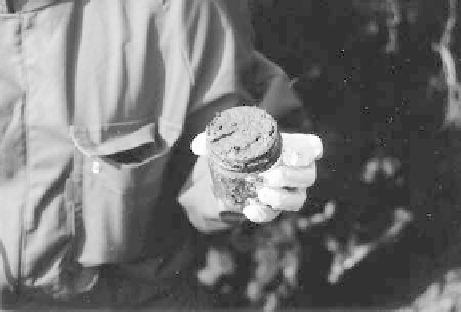Environmental Engineering Reference
In-Depth Information
The Roto-sonic method is similar to the Geoprobe method of advancing a boring into
unconsolidated subsurface deposits. One advantage of the Roto-sonic method when com-
pared to the Geoprobe is its ability to reach greater depths with a larger diameter bore-
hole. This capability enables a larger volume of sample to be collected and also results in
improved monitoring well installation success rates. Roto-sonic also produces less waste
and has a faster drilling rate than the hollow-stem auger.
Other drilling methods include direct mud rotary, directional drilling, solid flight and
bucket augers, jetting, direct air rotary, cable tool, and rotary diamond. These meth-
ods are used when drilling through solid rock, and not preferred for unconsolidated
materials.
4.3.1.5 Sample Containers
Soil samples using any of the methods described above are transferred into appropri-
ate sample containers following their collection. Most containers consist of glass having
a Teflon inner lid, designed to minimize the loss of vapors, and are filled to capacity as
shown in Figure 4.15. Specification of sample containers, and the methods, protocols, and
equipment required for sample transfer vary with the specific contaminants being eval-
uated. In addition, sampling procedures and methodology differ from state to state for
certain analytes. To avoid confusion, a work plan identifying the appropriate sampling
procedures should be prepared prior to initiation of sampling activities.
4.3.1.6 Documentation
Proper description of each soil sample by a qualified scientist is crucial. A field log book
houses this information.
Information recorded in a field log book when each soil boring is being advanced should
include
• Drilling method
• Size of auger or drill bit
• Drilling or advance rates
FIGURE 4.15
Filled 250 mL glass sample container of soil. (Photo by Daniel T. Rogers.)

Search WWH ::

Custom Search